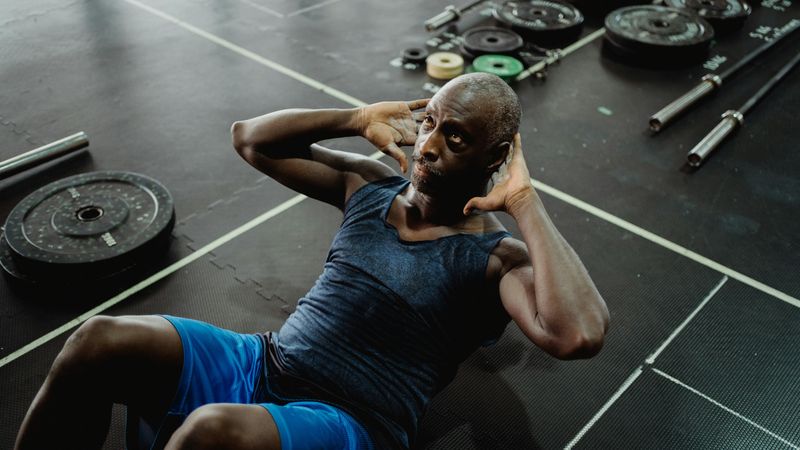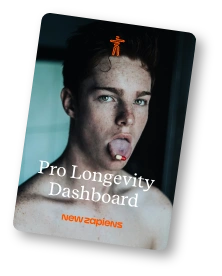How NAD supplements may support healthy aging — and how MOLEQLAR fits in

Have you ever wondered why some people maintain high energy levels, mental clarity, and overall vitality as they get older? For many years, scientists have been investigating that question by looking into nicotinamide adenine dinucleotide, commonly abbreviated as NAD+ or simply NAD. This tiny coenzyme seems to play a big role in healthy aging—supporting everything from DNA repair to energy production—and it has become one of the most researched molecules in longevity science.
Below, we’ll explore what NAD is, why its levels naturally decline with age, and how the brand MOLEQLAR offers a multifaceted approach with its regeNAD (NAD Regenerating Complex). While NAD+ might be a central piece of the longevity puzzle, remember that no single supplement is a magic bullet. The goal is to better understand the science behind NAD+ so you can make informed decisions about your health and wellness journey.
NAD+ 101: The basics
What exactly is NAD?
NAD stands for nicotinamide adenine dinucleotide, a molecule composed of two mononucleotides linked together via a chemical bond. You’ll find NAD in almost all of your cells, acting somewhat like a co-pilot (a “coenzyme”) to hundreds of different enzymes. Without NAD’s electron-carrying capabilities, many metabolic processes in the body would slow down or halt altogether.
NAD+ vs. NADH
- NAD+ is the oxidized form of the molecule, ready to pick up electrons.
- NADH is the reduced form, loaded with electrons to donate.
In your mitochondria—often called the “power plants” of the cell—NADH hands off electrons to the electron transport chain, thereby facilitating the production of ATP (adenosine triphosphate). This ATP powers nearly every cellular activity you undertake, from muscle movement to nerve signals.
Why the buzz about NAD levels?
NAD levels appear to decline with age, which some researchers believe could be a major driver of metabolic sluggishness, decreased cellular repair, and increased susceptibility to age-related disorders. In various animal models, boosting NAD+ leads to improved insulin sensitivity, cognitive function, and even lifespan extension. Early human studies have shown similarly promising, though not yet conclusive, results. This has fueled a surge of interest in ways to maintain or increase NAD+ levels through diet, lifestyle changes, or targeted supplementation.
A brief historical perspective
Early discoveries
- 1906: Scientists Arthur Harden and William Young first described NAD in the context of alcoholic fermentation. Interestingly, NAD is involved in both alcohol production (during fermentation) and its breakdown in the body.
- 1930s: Otto Warburg demonstrated NAD’s significance in redox reactions, which are electron-exchange processes fundamental to energy production in cells and to various industrial applications (like pyrotechnics and margarine manufacturing).
From DNA repair to “Longevity Genes”
- 1960s: Researchers discovered NAD’s involvement in DNA repair, specifically with enzymes known as PARPs (poly(ADP-ribose) polymerases).
- Modern Focus—Sirtuins: NAD’s popularity today largely stems from its role in activating a family of enzymes called sirtuins (SIRT1–7). Sirtuins are sometimes referred to as “longevity genes” because they influence cellular metabolism, stress responses, and genetic stability. When NAD+ levels are high, sirtuins function more optimally.
Niacin: The first cholesterol-lowering “Medication”
Long before statins and PCSK9 inhibitors, high-dose niacin (a precursor of NAD) was used in the 1950s to reduce LDL cholesterol levels. This historical tidbit underscores the complexity of vitamin B3-related compounds and their importance to human health—even before scientists fully grasped NAD’s extensive role.
Why NAD+ declines with age
It’s well established that NAD+ levels drop significantly over time, but researchers propose several converging factors:
- Reduced Production: Key enzymes and precursors for NAD+ synthesis, such as NAMPT and certain forms of vitamin B3, may become less abundant as we age.
- Increased Breakdown: Enzymes like CD38 and overactive PARPs can speed up NAD degradation. Chronic low-grade inflammation (“inflammaging”) can further elevate CD38 levels.
- DNA Damage and Cell Stress: Accumulated DNA damage triggers more frequent use of NAD in repair processes, depleting available supplies.
Potential benefits of higher NAD+
Scientists have studied NAD’s role in many tissues, often focusing on how supporting NAD+ might promote “healthspan”—the years of life lived in good health rather than just lifespan.
- Brain and Cognitive Function: NAD+ is critical for mitochondrial performance within neurons. Some studies suggest improving NAD+ levels may support memory, reduce age-related cognitive decline, and even offer mild protection against noise-induced hearing loss.
- Muscle Performance: Muscle cells require ample ATP, which depends on robust mitochondrial function—and thus NAD+. Animal models repeatedly show enhanced muscular endurance and strength when NAD+ is supported through supplementation or genetic manipulation.
- Heart Health: The heart’s endurance is unmatched—beating more than a billion times in an average lifespan. High concentrations of mitochondria (and the NAD+ they rely on) help maintain the consistent contractions. Early findings indicate that boosting NAD+ in older animals can improve cardiac function and resilience.
- Liver and Detoxification: The liver handles energy storage, protein synthesis, and detoxification. All these processes depend on enzyme systems that require NAD. It follows that higher NAD+ may support more efficient detox pathways.
- Immunity and Viral Defense: During certain viral infections, NAD helps fuel specific subsets of PARP enzymes that bolster cellular immunity. Researchers investigating SARS-CoV-2 noted that higher NAD+ levels might support antiviral responses—though the evidence is preliminary and may not generalize to all viral infections.
- ‘Longevity Genes’ and the Hallmarks of Aging: Sirtuins, often called “longevity genes,” appear to rely on NAD+ to modulate multiple hallmarks of aging, including DNA repair, inflammatory pathways, and stress responses. By ensuring adequate NAD, you potentially influence a broad suite of age-related processes.
Introduction to MOLEQLAR’s regeNAD (NAD Regenerating Complex)
MOLEQLAR, a company dedicated to advanced nutrition and longevity research, has developed regeNAD (NAD Regenerating Complex) to tackle the multifaceted nature of NAD+ metabolism. Rather than depending on a single ingredient, regeNAD supplies various vitamin B3 derivatives—most notably nicotinamide D-ribose, which has garnered attention for its potentially greater efficacy compared to plain nicotinamide (Nam).
While nicotinamide and nicotinic acid (niacin) remain valuable for feeding the Salvage and Preiss-Handler pathways, respectively, the inclusion of nicotinamide D-ribose offers a more direct route to key NAD+ intermediates. This shift responds directly to critiques that highlight the need for advanced forms of B3 beyond simple nicotinamide.
Additionally, regeNAD includes L-tryptophan to support the De Novo pathway, vitamin B6 to facilitate NMN conversion into NAD+, and apigenin, an ingredient that may help inhibit CD38—a major contributor to NAD+ breakdown. Together, these components aim to optimize multiple steps of NAD+ metabolism, reflecting the growing consensus that targeted approaches like nicotinamide D-ribose can be more effective than relying solely on standard forms of vitamin B3.
Spotlight on RiaGev®
RiaGev is a proprietary blend of D-ribose and nicotinamide designed to support NAD+ biosynthesis and antioxidant capacity. A 2022 study published in Nutrients found that RiaGev supplementation in overweight or obese adults significantly increased NAD+ and glutathione levels, suggesting enhanced cellular energy metabolism and improved redox balance. These findings point to RiaGev’s potential role in maintaining metabolic health, particularly in individuals seeking targeted approaches to bolster NAD+ status.
Don’t Miss Niagen® NR (NR plus TMG)
Alongside regeNAD, MOLEQLAR also offers Niagen® NR, available as NR plus TMG Capsules. Niagen® is a branded form of nicotinamide riboside, one of the best-researched vitamin B3 derivatives. Studies have shown that NR can effectively raise NAD+ levels in humans, with potential benefits for metabolic function, cognitive support, and cellular resilience. Coupled with trimethylglycine (TMG), this formulation aims to enhance methylation processes—another factor that influences gene expression and overall metabolic health.
Whether you choose regeNAD or Niagen® NR+, MOLEQLAR’s product range underscores the company’s commitment to clinically tested solutions for healthy aging. RiaGev® in regeNAD and Niagen® NR both align with the latest research on how best to maintain robust NAD+ levels.
More than supplements: The holistic approach
A holistic approach to healthy aging goes beyond simply taking supplements. Regular exercise, for instance, is known to upregulate the enzyme NAMPT, which indirectly helps maintain NAD+ levels. Intermittent fasting or caloric restriction may also support NAD+ by boosting sirtuin activity and reducing inflammation. In addition, a balanced diet that includes vitamin B3-rich foods (such as fish, meat, and whole grains) and amino acids like L-tryptophan can provide the essential building blocks for NAD+ synthesis.
Before making any major changes—be it dietary shifts or supplementation—it’s helpful to establish a baseline. To this end, MOLEQLAR has teamed up with the University of Vilnius to develop an at-home NAD test kit. By using a simple dry blood sample, the kit measures your current NAD+ levels, allowing you to track how these levels respond to different interventions and helping you identify the most effective strategies for your individual needs.
In addition to regeNAD, MOLEQLAR offers other products, such as the Fasten-Bundle, which includes compounds like Glucosamin, Berberin, and Spermidin to support various molecular aspects of fasting. Although these are not directly related to NAD+ metabolism, they can enhance an overall approach to metabolic health by assisting the body in managing stress responses, insulin sensitivity, and cellular maintenance.
Is NAD+ the “Fountain of Youth”?
While high NAD+ levels correlate with numerous markers of robust aging, we must remember that no single supplement can replace a healthy lifestyle. The field is still evolving, with plenty of unanswered questions about the interplay between inflammation, CD38 levels, sirtuin activation, and NAD metabolism. Future research may further clarify the best methods, dosages, and timing for NAD+ support.
Here’s what we do know:
- NAD+ is fundamental to processes like cellular energy, DNA repair, and immune defense.
- Levels drop with age, and this decline often coincides with reduced metabolic health and resilience.
- Boosting NAD+ — by slowing its breakdown, providing enzymatic cofactors, and ensuring adequate precursors — seems to help maintain various aspects of healthspan in animal models and early human trials.
MOLEQLAR’S regeNAD stands out for embracing multiple pathways and steps in NAD synthesis and breakdown. Though no approach guarantees the proverbial “fountain of youth,” a well-rounded regimen that includes a balanced diet, regular exercise, good sleep, and thoughtful supplementation could tip the scales in favor of better aging.
Final thoughts
NAD+ is more than just another health buzzword. Decades of biochemical and clinical research underscore its importance in keeping our cells running smoothly — especially as we grow older. Understanding NAD’s history, its complex web of pathways, and the factors that cause its decline allows us to make more nuanced choices about how to support healthy aging.
MOLEQLAR recognizes the multi-faceted nature of NAD+ metabolism, which is why it developed regeNAD (NAD Regenerating Complex) to cover many bases—precursor supply, enzyme support, and breakdown inhibition. If you’re curious about how your NAD+ level shapes your daily life, consider measuring it using their at-home NAD test kit, then consult with a healthcare professional to figure out the best approach for your unique situation.
Disclaimer: This advertorial is for informational purposes only and does not constitute medical advice. Always speak with a qualified healthcare provider before starting any new supplement, especially if you have underlying health conditions or take other medications. Results may vary, and research on NAD+ continues to evolve.
References
Author: Volker Blasek
Volker Blasek is a technical editor with a background in horticulture, fueled by a volunteer year on an organic farm. His passion for nature and conservation, paired with his expertise in psychology and science, shapes his engaging and thoroughly researched content. As a medical editor, he has authored over 3,000 articles on topics such as nutrition, diseases, symptoms, naturalopathy, and home remedies, delivering insightful and accessible reporting for a wide range of audiences.




